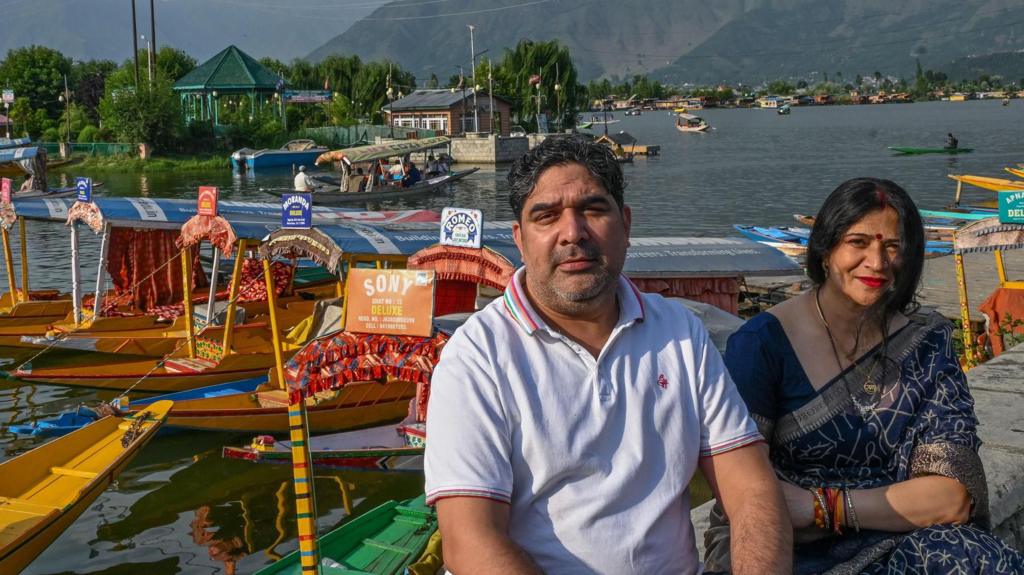Two months after a deadly attack in Indian-administered Kashmir deterred tourists and brought India and Pakistan to the brink of war, the Himalayan valley is showing early signs of tourism recovery.
Shabana Awwal films her children enjoying a water bike ride on Srinagar’s Dal Lake, a renowned tourist attraction.
Ms. Awwal, along with her husband and 14 family members, traveled from Rajasthan.
“I’ve explored Kashmir extensively and wanted to share its beauty with my relatives,” she told the BBC.
Their 10-day trip, planned for March, coincided with a significant shift. On April 22nd, militants attacked tourists near Pahalgam, resulting in 26 fatalities.
Tourism underpins Jammu and Kashmir’s economy. This unprecedented attack deeply impacted India, leading to the closure of 48 tourist sites; two-thirds remain closed.
Chief Minister Omar Abdullah, actively campaigning for reopening these sites, notes the attack’s immediate and widespread consequences.
“Existing tourists left, bookings were cancelled, and India and Pakistan nearly went to war in May,” Abdullah told the BBC. “The lasting impact includes damaged relations and a disastrous tourism season.”
Kashmir, claimed by both India and Pakistan, has been a long-standing conflict zone. Despite decades of insurgency, tourists were rarely targeted.
Ms. Awwal’s family proceeded with their holiday, stating they weren’t afraid and attributed negative perceptions to “media hype.”
They aren’t alone. Deepti and Anuj Gandhi from Jammu, who planned their trip recently, see Kashmir as the ideal summer destination.
“The children love the water bikes and boating. We come every year,” she explained.
ANI recently reported the arrival of Polish tourists.
These arrivals, shortly after the Pahalgam attack, offer hope for hoteliers, taxi drivers, guides, and shikara owners (operators of traditional boats on Dal Lake).
Haji Wali Mohammad Bhat, president of the shikara owners’ association, recalls April’s bustling Dal Lake, contrasting it with the current situation. He laments the impact on livelihoods.
Ravi Gosain, president of the Indian Association of Tour Operators, recently led a fact-finding trip for tour operators. He highlights Kashmir’s previously flourishing tourism sector, noting a significant drop this year, but expresses optimism about a recovery.
Last year saw 23.6 million tourists in Jammu and Kashmir, with 3.49 million in the valley. Gosain believes tourism can rebound, citing full flights and a welcoming local populace.
A new train link connecting Srinagar to the rest of India is also contributing to the revival.
The Srinagar-Katra train, known for crossing the world’s highest single-arch railway bridge, runs at full capacity, with tickets sold out for two months.
Katra, a gateway to the Vaishno Devi shrine, attracted 9.48 million pilgrims last year. Many pilgrims now travel onward to Kashmir.
Ghanshyam Bharadwaj and Mamata Sharma, a Delhi couple, made an impromptu trip to Srinagar via the train, highlighting its convenience.
When asked about safety concerns, Mr. Bharadwaj replied, “This is my country.”
Chief Minister Abdullah sees this increased visitation as positive, hoping to extend visits from hours to days and eventually weeks.
Follow BBC News India on Instagram, YouTube, Twitter and Facebook.

